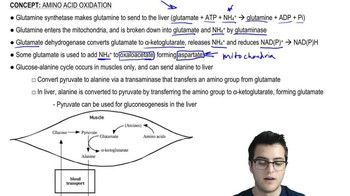Textbook Question
Draw a hypothetical metabolic pathway in Neurospora crassa composed of five substrates, five enzymes, and a product called nirvana. Number the substrates 1–5, and label the enzymes A–E, in order. (For instance, enzyme A catalyzes the reaction between substrates 1 and 2.) (a) Suppose a mutation made the gene for enzyme C nonfunctional. What molecule would accumulate in the affected cells?
835
views






